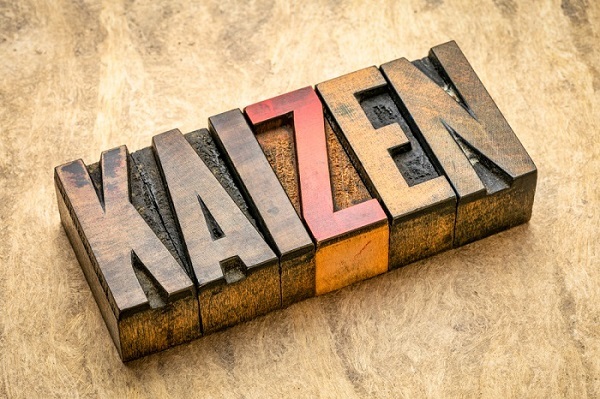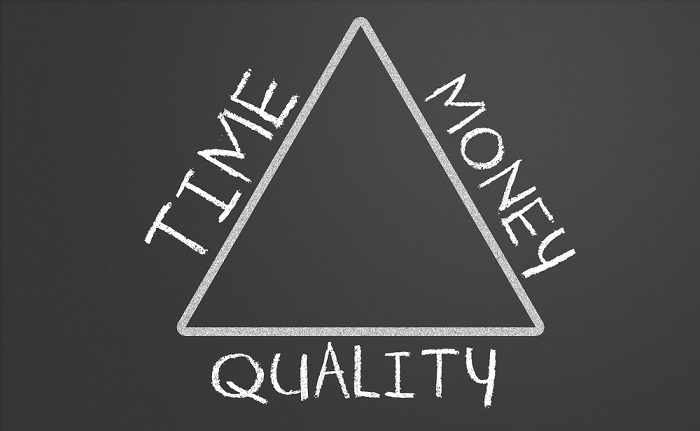
 Data Structure
Data Structure Networking
Networking RDBMS
RDBMS Operating System
Operating System Java
Java MS Excel
MS Excel iOS
iOS HTML
HTML CSS
CSS Android
Android Python
Python C Programming
C Programming C++
C++ C#
C# MongoDB
MongoDB MySQL
MySQL Javascript
Javascript PHP
PHP
- Selected Reading
- UPSC IAS Exams Notes
- Developer's Best Practices
- Questions and Answers
- Effective Resume Writing
- HR Interview Questions
- Computer Glossary
- Who is Who
What is Kaizen in Quality Management?
The purpose of this article is to provide a thorough understanding of Kaizen and its application in quality management. Kaizen is a Japanese term that means "constant improvement," and it refers to making small changes to processes and systems to improve quality and productivity.
Its origins can be traced back to Japan's post-World War II era and have since been adopted by many companies worldwide.

The article explains Kaizen's principles, benefits, tools and techniques, and implementation challenges. It also compares Kaizen to other approaches to quality management. The article also includes tips for implementing Kaizen, such as identifying areas for improvement, setting goals, forming a Kaizen team, analyzing processes, implementing improvements, monitoring progress, and continuously improving.
Introduction to Kaizen and its origins
Kaizen is a Japanese concept that has become a critical component of quality management in many industries around the world. Kaizen is a Japanese term that means "constant improvement," and it refers to a philosophy that involves making small, incremental changes to improve processes and systems over time.
Kaizen dates back to the post-World War II era in Japan when the country was rebuilding its economy and looking for ways to improve productivity and quality. Toyota was the first to incorporate it into its manufacturing system, and it has since been adopted by many other companies across a wide range of industries.
One key statistic demonstrating kaizen's value is that it can result in significant increases in productivity and quality. According to one study of companies that used kaizen practices, they were able to achieve an average increase in productivity of 20-30% and a reduction in defects of up to 90%.
Understanding the principles of Kaizen in quality management
Kaizen principles call for small, incremental improvements in all aspects of the organization, from production processes to customer service. This approach emphasizes the importance of involving all employees in the improvement process, as everyone has valuable insights and improvement ideas.
The concept of "gemba," which means "the real place," is a key principle of Kaizen. This principle emphasizes the importance of physically visiting the location where work is being performed, observing the process, and identifying areas for improvement. This ensures that improvements are based on actual experience rather than theoretical ideas.
Another important Kaizen principle is the concept of "poka-yoke," which translates as "mistake-proofing." This entails designing processes and products in such a way that errors are avoided before they occur. This contributes to higher quality and less waste.
Benefits of implementing Kaizen in quality management
One key principle of Kaizen is that everyone, from top management to front-line employees, is involved in the improvement process. This ensures that everyone is invested in improving the organization's efficiency and effectiveness.

According to a Kaizen Institute survey, companies that implement Kaizen see an average improvement in productivity, quality, and delivery times of 10-30%.
This is due to Kaizen's promotion of a culture of continuous improvement, which results in better processes, happier customers, and, ultimately, increased profits.
Kaizen vs. other quality management approaches
Kaizen is a quality management philosophy that emphasizes continuous improvement. It originated in Japan and has since spread to businesses all over the world. One of the most important aspects of Kaizen is the emphasis on involving all employees in the process of improvement.
Other approaches to quality management, such as Total Quality Management (TQM) and Six Sigma, may rely more heavily on specialized teams or experts to lead improvement efforts.
The impact of Kaizen on productivity is one statistic that demonstrates its effectiveness. According to a Japan Productivity Center study, companies that implemented Kaizen practices saw an average 30% increase in productivity. Rather than large, disruptive changes, this improvement was achieved through small, incremental changes made by employees at all levels of the organization.
How to get started with Kaizen in quality management
Here are some pointers to help you get started with Kaizen in quality management ?
Identify the areas that need improvement ? Examine your processes and products to identify areas for improvement. Customer feedback, employee suggestions, or data analysis can all be used to accomplish this.
Set goals ? Once you've identified the areas that require improvement, set goals for what you want to accomplish. Ensure that the objectives are specific, measurable, achievable, relevant, and time-bound (SMART).
Form a Kaizen team ? Create a team of employees who will be in charge of implementing Kaizen. This team should include representatives from various departments who have an interest in the process or product.
Analyze the process ? Analyze the process to identify the underlying causes of problems. This can be accomplished with tools such as flowcharts, cause-and-effect diagrams, and Pareto charts.
Implement improvements ? Once you've identified the root causes of problems, make changes to address them. These enhancements can take the form of small, incremental changes or larger process changes.
Monitor progress ? Progress should be tracked to ensure that the improvements are effective. Track the impact of the changes with data and adjust the process as needed.
Continuously improve ? Finally, keep in mind that Kaizen is a process that is ongoing. Always strive to improve your processes and products, and involve your employees in the process. By doing so, you can foster a culture of continuous improvement that will aid your organization's long-term ability to compete.
Tools and techniques for Kaizen in quality management
The PDCA cycle is one such tool (Plan, Do, Check, Act). This cycle entails planning a change, implementing it, evaluating the results, and then acting on the feedback received to improve the process even further. This cycle is repeated indefinitely to achieve continuous improvement.
Value Stream Mapping is another useful tool (VSM)
This tool assists in identifying the value-added and non-value-added steps in a process as well as visualizing the workflow. This data can then be used to eliminate waste and improve process efficiency.
Another technique used in Kaizen is 5S
It entails organizing and standardizing the workplace in order to increase productivity and decrease waste. Sort, Set in Order, Shine, Standardize, and Sustain are the acronyms for the 5S method.
Common challenges faced during the implementation of Kaizen in quality management
One of the most common difficulties is resistance to change. Some employees may be resistant to changes in their work processes, particularly if they have done things in the same way for a long time. This can lead to a lack of participation in the Kaizen process and a slowing of improvement implementation.
Another issue is a lack of management support
Kaizen's efforts may fail if top-level management does not support and commit to them. Management should provide employees with the resources, training, and time they need to participate in Kaizen activities.
Furthermore, unclear goals and expectations can make measuring the success of Kaizen initiatives difficult. To track progress and ensure that everyone is working towards the same goal, it is critical to establish clear goals and metrics.
Maintaining Kaizen's efforts can be difficult
Continuous improvement necessitates ongoing effort and commitment from all employees, and it is all too easy to revert to old habits. As a result, it is critical to establish a culture of continuous improvement and incorporate it into the organization's values and beliefs.

